Click Edit >
System Tables > Diagnosis Search
In the Diagnosis Search dialog you can perform
an ICD10 Search, an ICD9
Search, use the Crosswalk
functionality, or use the SNOMED
functionality.
When using the ICD10 Search, Crosswalk, or SNOMED option, an ICD10 Code Set field will be available
allowing you to select the Oct 1, 2014
– Sept 30, 2016 code set, the Oct
1, 2016 – Sept 30, 2017 code set, the Oct
1, 2017 – Sept 30, 2018 code set, or All
ICD10 Codes. This allows you to easily search for the applicable
ICD10 codes that are active, as outlined by the CDC, for the applicable
date ranges. When accessing the Diagnosis Search dialog via the Administration
menu, the system will default to the code set based on the current day’s
date.
When performing an ICD10 Search or using the Crosswalk option, the
dialog will also contain a tree view (middle column) of the selected diagnosis,
as well as a detail pane (right column) that further details the diagnosis.
When using the SNOMED option, the dialog will also contain Rules and
Advice (middle column), and a tree view (right column) of the selected
diagnosis.
Once the applicable diagnosis is located, click the OK
button to exit the Diagnosis Search dialog.
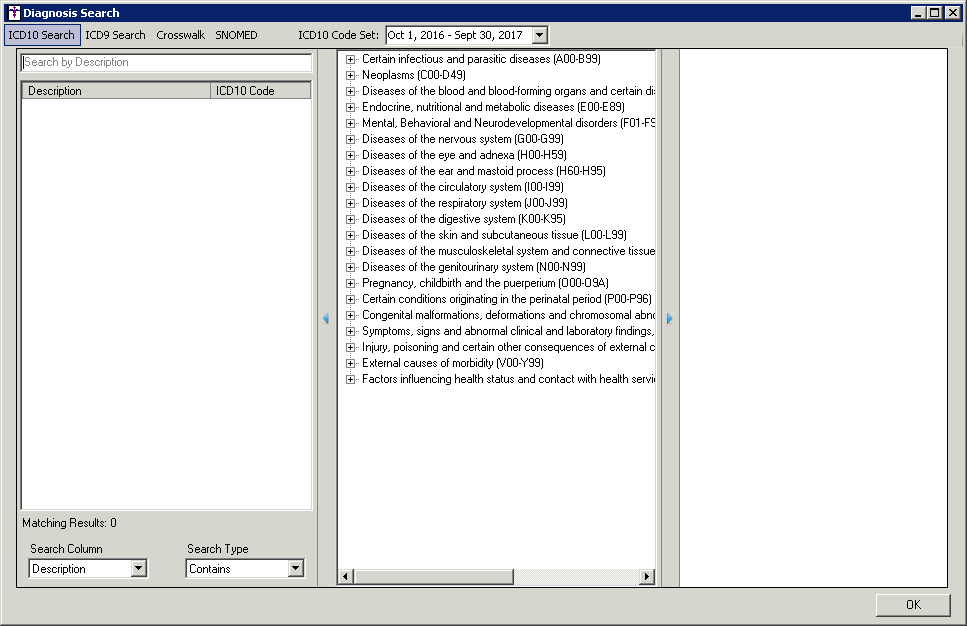
To perform an ICD10 Search, be sure that the ICD10 Search option is selected above,
and then be sure that the correct ICD10
Code Set is selected. Next, you can then select the applicable
Search Column and Search
Type, and then begin typing the diagnosis you want to locate in
the search field. The system will return diagnoses that match that description
for the Search Column and Search Type selected.
Once the applicable code has been located, highlight that code in the
left column, and the applicable code will become highlighted in the diagnostic
tree in the middle column, and the right column will display detailed
information regarding the selected diagnosis.
NOTE: You also have the ability to search for specific codes via the
diagnosis tree in the middle column. Likewise, when performing an ICD10
Search, you are able to hide the left and right columns as needed by clicking
the  and
and  buttons.
buttons.
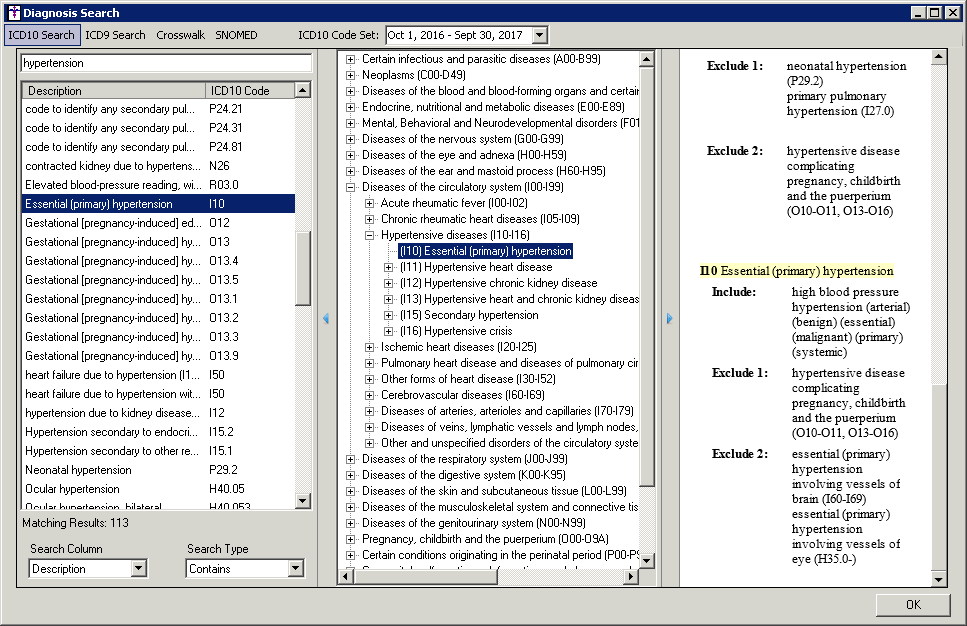
To perform an ICD9 Search, be sure that the ICD9 Search option is selected above,
then select the applicable Search Column
and Search Type, and then begin
typing the diagnosis you want to locate in the search field. The system
will return diagnoses that match that description for the Search Column
and Search Type selected.
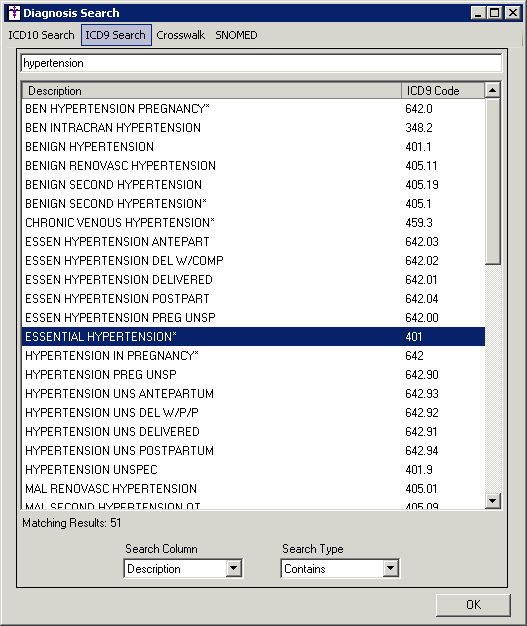
To use the Crosswalk option, be sure that the
Crosswalk option is selected above,
and then be sure that the correct ICD10
Code Set is selected. Next, you can then enter the specific ICD9 Code you would like to match to
an applicable ICD10 code. The system will return ICD10 codes that match
that ICD9 code.
NOTE: If you highlight an ICD9 Code in the ICD9 Search area, and then
click the Crosswalk option, that ICD9 will default into the search field
and the system will return the ICD10 code(s) that match the selected ICD9
code.
Once the applicable code has been located, highlight that code in the
left column, and the applicable code will become highlighted in the diagnostic
tree in the middle column, and the right column will display detailed
information regarding the selected diagnosis.
NOTE: Similar to the ICD10 Search, you also have the ability use the
diagnosis tree in the middle column to locate specific diagnosis codes.
Likewise, when using the Crosswalk, you are able to hide the left and
right columns as needed by clicking the  and
and  buttons.
buttons.
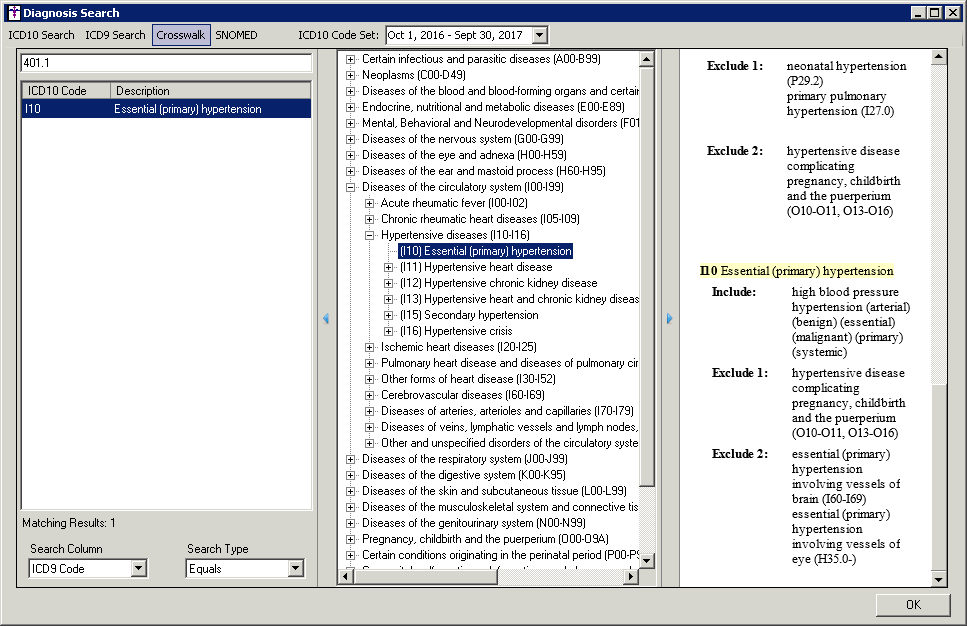
Once the applicable code has been located, highlight that code in the left column, and the middle column will contain matching ICD10 codes. There are three possibilities for matching the SNOMED code to ICD-10 codes in the middle column: a one to one match, a one to many match, and no matches.
The right pane will display the ICD-10 code tree, and if an ICD-10 code is selected in the middle column, that diagnosis code will be selected in the tree.
NOTE: You also have the ability to search for specific codes via the diagnosis tree in the right column. Likewise, when performing a SNOMED Search, you are able to hide the left and right columns as needed by clicking the
 and
and  buttons.
buttons. 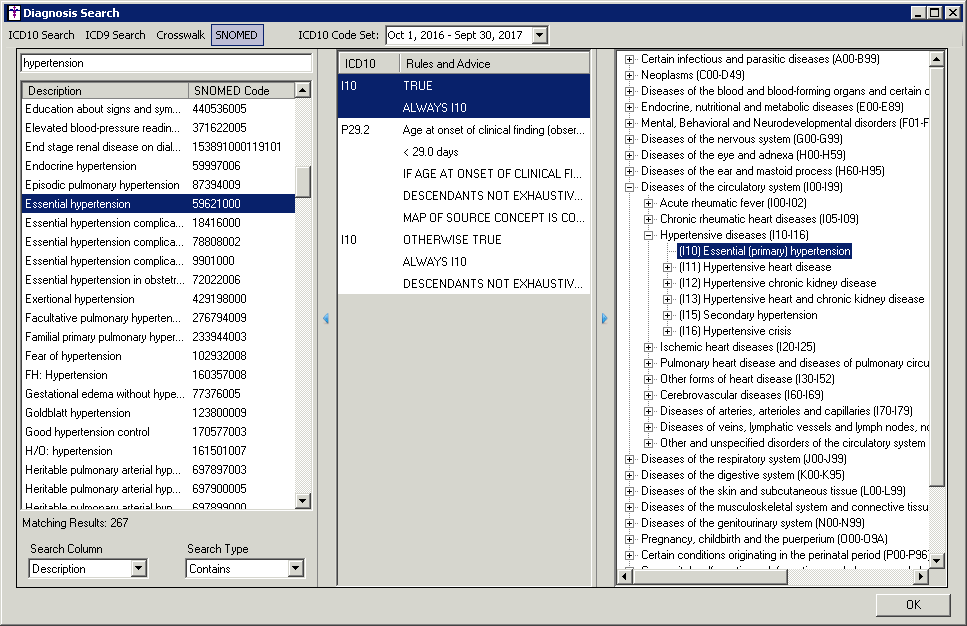
When finished, click the OK button to exit the Diagnosis Search dialog.